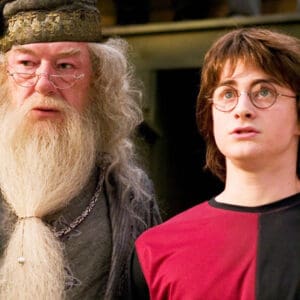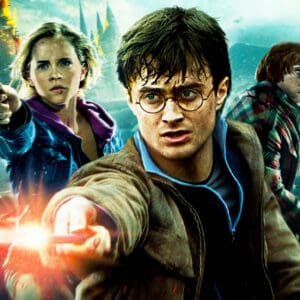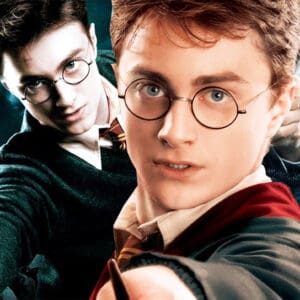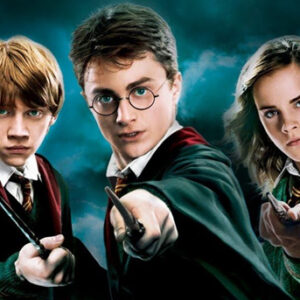Last Updated on August 5, 2021

Ink & Pixel is a source of pride and joy for me as a writer and as such, I’m always striving to take this column further for those who read and enjoy it. If you yourself, or anyone you know, helped to make any of the amazing feature animated films found within this column, I would love to talk to you to further my knowledge. Please contact me at [email protected] so we can discuss it further.
Most little girls love a Disney princess. Throughout the course of animation history the princesses of Disney have played a major role in shaping the imaginations and play times of young women far and wide. With the help of some chimera and a little bit of Disney magic, a living room could transform into an elaborate ballroom, the family dog would serve as a most honored guest, and little Johnny down the street (much to his reluctance because girls totally have cooties) would become a obstinate prince for a most enchanting affair. It’s a time of wonderment and one that is precious in the shaping of a young girls thirst for a future built on whimsy and excitement. Little did everyone know that with the release of THE PRINCESS AND THE FROG that Disney was about to introduce the world to their first African-American princess; ready take her place among the rest of these cherished and important characters in animation history. It’s time to raise an illusory tea cup to change and a return to form – as we explore this remarkable film.

THE PRINCESS AND THE FROG – the 49th animated film created by Walt Disney Animation Studios, released in 2009, was an animated musical fantasy that returned Disney animation to its 2-D, hand-drawn roots. Written by Ron Clements (TREASURE PLANET, HERCULES) and John Musker (THE LITTLE MERMAID, THE BLACK CAULDRON) THE PRINCESS AND THE FROG was loosely adapted from the E.D. Baker novel “The Frog Princess.” However, the original tale of the frog prince could be found as the first story in the collections of The Brothers Grimm, under it’s German title “Der Froschkönig oder der eiserne Heinrich” which literally translates to “The Frog King or The Iron Henry.” Though unlike the modern day versions of the tale – where a kiss would be the catalyst to break the spell – it was originally written by the Grimm Brothers that the spell was broken when the frog was thrown against a wall in repugnance. My how a little Disney magic can gloss over that bit of loveliness, eh?

The story of Disney’s THE PRINCESS AND THE FROG focuses on the tale of Tiana (Anika Noni Rose), a young woman with big dreams of owning her own restaurant inside of New Orleans, Louisiana, and her magical journey through a world of love, voodoo, and extreme anthropomorphic body modification. Tiana, after being mistaken for a real princess by a walking, talking frog named Prince Naveen (Bruno Campos), finds her self transformed into a frog herself as part of a nefarious plan perpetrated by conjurer of dark magic, Dr. Facilier (Keith David). Together, Tiana and Naveen must venture into the hazardous Loisiana bayou, where with the help of their new friends – a trumpet playing crocodile named Louis (Michael-Leon Wooley), and a hopelessly romantic Cajun firefly named Ray (Jim Cummings), the two inevitable (fated) lovers must find a way to break the curse and live happily ever after.

THE PRINCESS AND THE FROG was considered a very special film for Walk Disney Animated Studios in that it was the company’s first and glorious return to hand-drawn, 2-D animation since their film HOME ON THE RANGE released in April of 2004. THE PRINCESS AND THE FROG also marked the return of the Broadway-musical style approach to Disney animated films that was popular throughout most of their works in the 1980’s and 90’s. The music was written into the film not only to reflect the very musical nature of New Orleans but was also used to tell much of the story and display many of the personalities of the film’s characters as larger than life itself.

Now, because there is a subset of humanity that sees fit to be willfully ignorant, therefore coming off as devolved every now and again, there were more than a few people who took issue with Disney adding an African-American princess to their royal family. This attitude is preposterous. Months before the film’s release there was an outcry of anger from people who were not only displeased with the color of Tiana’s skin, but also with the fact that she was to fall in love with a character who was himself, Caucasian.

During the media blitz, an unnamed critic was stated as claiming that “Disney had the perfect chance to make its first black prince, but instead decided to go the controversial route.” Another anonymous voice proclaimed that “I think it’s sad he is white because its saying that black love isn’t good enough and that black men could never be princes.” In my humble opinion both of these statements are proof positive that some people will always take issue with anything they can sink their uninformed and bigoted fangs into.

The truth is that all Disney ever set out to do when creating Princess Tiana was to introduce a brand new princess into their royal family; one whose hard-working personality and unquenchable thirst for life set her apart from the rest of her sisters-in-nobility and not the color of her skin. What you’ll find in THE PRINCESS AND THE FROG is that Tiana is a young woman with hopes and dreams, whose ingenuity and sass make her an unforgettable character and a fine addition to the Disney aristocracy.

Tiana, unlike other Disney princesses, had a total of three distinct appearances during the film. Weeks were spent crafting the character designs of her as a young child, then again as a young woman, and finally as a rather elegant frog of the bayou. In fact, it’s been said that the most difficult design to achieve in the making of the film was indeed Tiana’s frog form. In order to study a frog’s unique amphibious body structure a very large member of the species was brought into the artists studio for observation. Placing the large frog atop a pillow, at the center of a large circle made up of artists and animators, Team Disney went to work constructing as many designs as they could manage. It was not only important that Tiana’s frog resemble the mucus secreting creature but also that it displayed feminine characteristics unlike Frog Prince Naveen’s boyish design.

Because THE PRINCESS AND THE FROG was to be a return to a more traditional style of 2-D animation, it was necessary to employ the use of a few computer-related art programs. Does that sound like a contradiction? Allow me to explain. A program called Toon Boom Harmony – developed by Canadian software company Toon Boom Animation – was used to develop a vast majority of the film’s animation sequences. The Harmony software contains tools that include pencil lines with textures, a deformation tool, morphing abilities, inverse kinematics, as well as particle and 2D-3D integration. Harmony also has the ability to be used as a paperless animation solution (perfect for the making of this particular film). This portion of the program allowed the artists to draw the animation directly into the software using a Wacom tablet.

Harmony was used in place of CAPS, the tried and true program developed by Pixar back in the 1980’s, as CAPS (a collection of software, scanning camera systems, servers, networked computer workstations, and custom desks) was unfortunately growing obsolete. The Harmony software was quickly outfitted with a series of plug-ins that allowed for a smoother transition for artists and animators long familiar with the CAPS functionality. The merging of the two programs proved to be a fitting marriage as the art production of the film was able to move into full swing shortly after the technological union.

In addition to this Harmony/Caps blend of technology (and used for the “Almost There” dream sequence, which featured a direct Art Deco approach – one that mirrored the work of Harlem Renaissance painter Aaron Douglas) the art department chose also to hand draw these sequences on paper before scanning them directly into Photoshop where they were to be cleaned up using Adobe After Effects.

This sequence is clearly distinguishable from the rest of the film, adding to the finished product a layer or whimsy and style not seem in too many animated films in recent years. Drastically changing up the art style in the middle of a film can often jar and displease an audience, but that was skillfully avoided in THE PRINCESS AND THE FROG. I’ll also thank you to remember the Tale of the Three Brothers animated sequence from HARRY POTTER AND THE DEATHLY HALLOWS PART 2. You remember how similarly awesome that was? I bet you do.

THE PRINCESS AND THE FROG, in my estimation, was a particularly important film for Disney Animation Studios. It proved beyond a shadow of a doubt that traditional animation still has a place in today’s market, even one that has become over-saturated with the use of CGI technology. The film also gave birth to some truly revolutionary animation programs that will be used throughout the industry for years to come. What’s more is that despite the backlash and and hoopla generated by critics and the public alike, the film still triumphed by pulling in $267,045,756 worldwide during its theatrical run.

I’m ecstatic to say that the popularity of the film and its characters has only grown in the recent years since the films release. Since becoming the fifth highest grossing animated feature of 2009 the film has done exceptionally well both in the merchandising and home video markets. If you haven’t already done so, I urge you to partake in this vibrant and often hilarious animated film. THE PRINCESS AND THE FROG features one of Disnye’s best and brightest unsung heroes and it deserves your attention. Oh yeah, and there’s a crocodile that plays a trumpet like Louis Armstrong. I mean c’mon, people!




















Follow the JOBLO MOVIE NETWORK
Follow us on YOUTUBE
Follow ARROW IN THE HEAD
Follow AITH on YOUTUBE